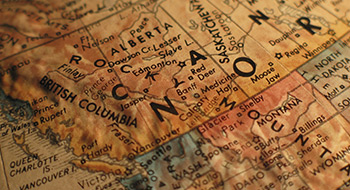

Alberta’s NDP government will forge ahead building schools and hospitals and hiring more teachers and nurses, but the devastating impact of low oil prices has it planning to borrow money just to keep the lights on.
There’s money earmarked in Tuesday’s provincial budget to reduce school fees, start a school nutrition program and deliver a new child benefit for low-income families.
There’s also cash to provide employers with grants of up to $5,000 for each new job created over the next two years and an extra $1.5 billion to improve access to capital for small- and medium-sized businesses.
Read: Canadian employers lag in the talent game
There are small tax increases for cigarettes and booze.
Much of the spending is being underwritten by record debt, which is pegged to reach $36.6 billion by 2018 — nearly 15 years after former premier Ralph Klein announced the province had fully paid off what it owed.
Longer term forecasts have debt reaching more than $47 billion by 2020.
And starting next year, the province plans to borrow money to pay not just for capital projects as it has in the past, but for day-to-day programs as well.
“This budget lays out a responsible economic plan that will serve as a shock absorber to our short-term challenges and grow the economy over the long term,” Finance Minister Joe Ceci tells reporters.
Asked how he thinks Albertans will feel about going from debt free to almost $50 billion in the hole, Ceci says: “I think Albertans will continue to be proud that we are building a province that will take us far beyond this recession and lift us back to the good times we’ve all enjoyed.”
Read: Companies cautious with salary increases
Wildrose Leader Brian Jean says the budget is a roadmap to crushing deficits and debt with a promise, but no realistic plan, to pay them down. “The NDP’s first budget is a complete fantasy. Every Albertan will be poorer because of this budget. And we know more taxes are just on the horizon, yet this premier has taken no meaningful action to restrain the growth of government.”
With low resource prices sucking $6 billion out of Alberta’s bottom line this year, Ceci delivered a budget with a $6.1-billion deficit.
The province plans to take $3.2 billion out of its contingency account this year, then drain it completely the next.
Alberta has not borrowed to cover day-to-day expenses in two decades. But starting next fiscal year, it plans to borrow $712 million for operational expenses and then $3 billion in 2017.
Interim PC Leader Ric McIver says the NDP cannot blame the previous government for this. “When we borrowed money, we had a plan to pay it back. They have no plan to pay it back. We had no plans to borrow money to pay for operating expenses and they do. They can’t call this a PC mess, this is an NDP-made, manufactured mess.”
To prevent debt from taking over, the government introduced new legislation to cap borrowing. It would limit government debt to 15% of nominal gross domestic product, which is GDP not adjusted for inflation.
Ceci says steep cuts and public-sector layoffs would have brought even more devastation to an economy that has already seen thousands of job losses in the private sector due to the fall in oil prices.
Funding is to continue to rise for core services in health, education and advanced education, but the plan is to keep overall program spending growth to two per cent a year.
Read: Why Canada’s economy is underperforming
The tax on a carton of cigarettes is going up by $5, a 12-pack of beers will be an extra 24 cents and a bottle of wine will cost an extra 18 cents. There are also some hikes on locomotive fuel and insurance premiums. The government has already increased corporate taxes and income taxes on the well-to-do.
The budget timing is out of whack due to the provincial election in May that saw voters put in Premier Rachel Notley and the NDP and toss out the Progressive Conservatives after more than four decades in power.
Prior to the election, then-premier Jim Prentice introduced a budget, but it was never passed. As a result, Tuesday’s budget is for a fiscal year that is already almost seven months old.
A new budget for 2016 to 2017 is to be tabled in the spring.
